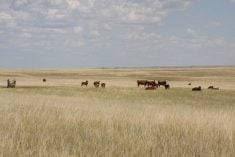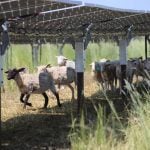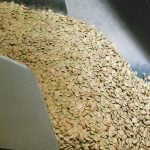New diesel fuel requirements have created a marketing opportunity for biodiesel-based lubricity additives.
Ultra-low sulfur diesel is now the standard in Canada and the United States. As of Oct. 15, the allowable sulfur content in on-road diesel fuel in both countries is 15 parts per million, much lower than the previous standard of 500 ppm.
Pre-1990 diesel contained 3,000 ppm of sulfur. At that time there were no lubricity problems with the fuel, but with the move to low sulfur and then ultra low sulfur diesel, lubricity has become a major issue for trucking fleets and other diesel users.
Read Also

August rain welcome, but offered limited relief
Increased precipitation in August aids farmers prior to harvest in southern prairies of Canada.
That has created an opportunity for companies such as Milligan Biotech Inc. of Foam Lake, Sask., which makes a diesel fuel conditioner it claims increases fuel economy by up to 10 percent and decreases engine wear by up to 50 percent.
“It’s a real money-maker for the trucking industry,” said Zenneth Faye, executive manager of Milligan Bio-Tech.
He is also enthused about a new engine design that moves the ring higher up on the piston. While this further reduces sulfur emissions, it also increases engine wear.
Faye predicts the new engines will boost the demand for lubricity products, but it won’t happen overnight because manufacturers will phase them in over time.
Along with opportunities for biodiesel manufacturers come a few threats – the biggest being the negative publicity associated with quality control problems in the fledgling industry.
Shortly after Minnesota implemented a two percent biodiesel mandate in 2005, truckers found themselves stranded along roadsides across the state.
Soybean-based biodiesel that didn’t meet the national ASTM D6751 specifications found its way into the blending system, clogging fuel filters when temperatures fell below -15 C, causing the Minnesota Trucking Association to request a temporary cessation of the government-enforced mandate.
Faye is concerned that similar off-spec biodiesel will be produced and sold in Canada.
“We cannot afford to do that with a new industry. We have a lot of wannabes out there in Saskatchewan right now.”
He said some companies are unwilling or unable to pay the $3,000 fee to test their fuel to see if it meets industry-approved standards. They claim they can tell their product is good enough by looking at it in a bottle.
“It doesn’t quite work that way,” Faye said.
“We’ve had product that looked very good in the bottle and didn’t pass.”
A bad batch of fuel could tarnish the industry so badly it would have a tough time recovering.
“Quality, quality, quality. I cannot overemphasize that word,” he told farmers, researchers and bureaucrats attending a flax meeting held during Crop Production Week in Saskatoon.
Unfortunately, quality testing isn’t an exact science. Faye said a sample can be taken to five different labs and produce five different results.
The industry also continues to wrestle with the cold flow issue, where even biodiesel produced to specification gels when the temperature drops to a certain level. The cloud point for animal fat biodiesel is 20 C, 0 C for soy-based diesel and -14 C for canola-based fuel.
Those measures are for pure biodiesel, also known as B100. Faye said cold flow isn’t a problem for a two percent canola biodiesel blend, also known as B2, which is the type promoted in Canada. However, some are pushing for B5 diesel and while that may not be a problem in the summer, it could cause serious issues in the winter.
“For Canada we have to be very, very concerned about that,” he said.















